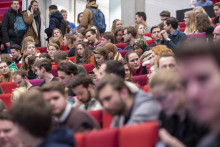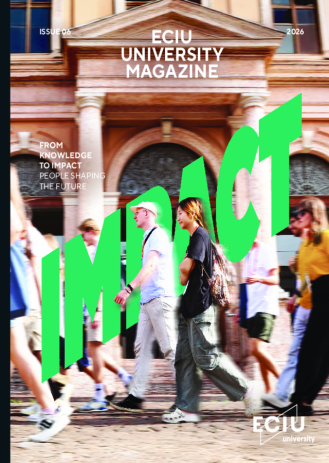The sensor is the result of Ymeti's thesis work at the TNW faculty. He feels good about it. `The phone keeps ringing. Businesses and the media are very interested. Our chip is mentioned in Nature and MIT's Technology Review, and the French newspaper Le Monde has written an article about it.'
Ymeti developed the chip together with Hans Kanger and professors Jan Greve and Vinod Subramaniam of the Biophysical Engineering group. The application can be used anywhere: the chip is relatively small and portable. On top of that, it's fast and easy to use by anyone. `For example,' says Ymeti, `Take the SARS outbreak. If you want to prevent or limit that, you can take a blood or saliva sample of airport passengers for example, see who is infected and put those people in quarantine.' The researcher says the sensor is highly sensitive and does very precise measurements. `And you don't have to go to a laboratory and wait a couple of days for the result.' The SARS example is just one of the many detectable viruses. `A lot of diseases are detectable if antibodies are produced. For the tests some proteins are necessary, some blood or saliva, and in no time you know whether a person is infected and by what.' The testing is based on light patterns. On the chip four parallel light channels are present: one reference channel and three measurement channels. `The proteins are placed there. By a change in the light pattern it is possible to determine if infection has occurred.'
At the moment, a prototype of the chip is in the UT laboratory. `We have conducted the first successful experiments there. In cooperation with PaRaDocs Group BV we will develop another prototype for measurements in hospitals and clinics. If those turn out successfully, we will bring the chip on the market.'
The famous virus expert Ab Osterhaus, head of the virology department of the Erasmus University Medical Center in Rotterdam, says the development is interesting. `The existing methods of detecting viruses get a new application. This is very specific, because you only check for a couple of viruses. What we do at the Erasmus is research on the presence of hundreds of viruses. A chip for that kind of research is therefore expensive.' Osterhaus speculates about the marketability of Ymeti's chip. `At a lot of places in the world, people are working on developing such a chip. There is a market for it, so researchers fill the gap.'
The article `Fast, ultra-sensitive virus detection using a young interferometer sensor´ will appear in the February issue of Nano Letters. More links for this subject: MIT's Technology Review and Nature.com.
Trans. Henriëtte van Dorp







